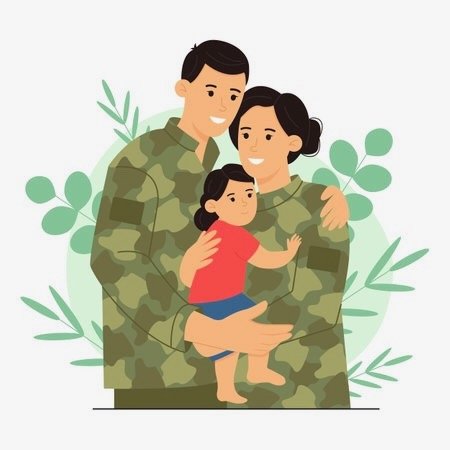Recognizing PTSD and the Path to Recovery
/BY BREE MINGER, AMFT
As we honor those who have served and continue to serve this Veterans Day, it is important to discuss a diagnosis that impacts many people, especially veterans. Post Traumatic Stress Disorder, commonly referred to as PTSD, impacts about 6% of the U.S. population. The disorder is even more likely to impact veterans. According to the Department of Veteran Affairs, 23% of veterans using VA healthcare will experience PTSD at some point in their lives. PTSD is much higher among veterans using VA healthcare because every veteran is screened for PTSD. Not every veteran uses VA healthcare, and many circumstances for civilians can result in PTSD; therefore, there are likely many people struggling with PTSD and going unnoticed in civilian healthcare. A friend or family member of yours may be grappling with symptoms of PTSD, regardless of military service.
What To Look For
Deployment, intense accidents, sexual assault, natural disaster, death of a loved one and countless other situations can result in PTSD symptoms for veterans and civilians. Symptoms can have lasting impacts on mental health, relationships and lifestyle. Here is what to look for:
Intrusions: Involuntary memories like nightmares or flashbacks may feel so real, it is as though someone is re-living that moment.
Avoidance: Perhaps they never want to go to a certain restaurant, or they don’t want to go for a bike ride. Avoiding activities, objects, places, or people related to a stressful and traumatic event may be a form of coping to forget and avoid how they felt during that time.
Dark thoughts or emotions: experiencing lower mood, feeling angry, numb, guilty, shameful, or difficulty trusting others. These changes in mood can also result in feeling detached from others or much less interest in previously enjoyable activities.
Hyperarousal: They may feel on edge or easily startled. It may result in poor sleep, difficulty concentrating, irritability, or angry outbursts.
Most of these symptoms naturally occur within days after a traumatic event. In order to be diagnosed with PTSD, the above symptoms must occur for a month or longer and the symptoms must be significantly impacting the person’s functioning in daily life. If you notice these symptoms in yourself or a friend, it will be helpful to seek treatment.
A PATH TO RECOVERY
Reaching out for help is often the hardest part for many people, but especially for those with PTSD symptoms, as avoiding memories and feelings about the event is natural. However, different forms of therapy can be helpful towards recovery.
Talk therapy can be helpful to learn coping skills to manage symptoms and change negative thoughts or feelings into better ones about yourself and others.
EMDR (eye movement desensitization and reprocessing) is especially helpful to reprocess a traumatic memory safely with a professionally trained EMDR therapist.
Animal therapy leads to healing for many with PTSD. Whether a service dog, or equine therapy, the relationships formed with these animals can help to decrease symptoms of PTSD and improve quality of life.
Medication can also be helpful to reduce symptoms and improve quality of life. It is important to seek medication from a psychiatrist and coordinate care with any other medical or mental health professionals.
There is hope for healing. If you or a loved one is experiencing symptoms of PTSD, it is important to receive care. Look for a therapist or provider who can assist you as soon as possible. Other resources include:
National Alliance on Mental Illness (NAMI) Help Line: 1-800-950-6264
Suicide and Crisis LifeLine: Call or Text 988
Veterans Crisis Line: Call 1-800-273-8255 or Text 838255
https://www.ptsd.va.gov/understand/common/common_veterans.asp
https://health.mountsinai.org/blog/how-can-you-tell-if-someone-you-know-may-have-ptsd/








